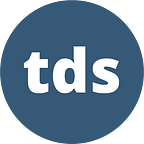Thinking Outside Data Science’s Many Boxes
The two pillars of data science—statistics-backed analysis and code—come with a whole range of constraints. Structure your query the wrong way, and you might mess up an entire pipeline. Apply a formula incorrectly, and the results of your test might no longer reflect reality.
Working within constraints doesn’t have to feel rigid or limiting, though—on the contrary. A nimble data professional often needs to lean into their creativity while still working within a predefined set of parameters. This holds true in our day-to-day workflows, in the way we learn new skills, and in how we set ourselves up for a successful data career.
The articles we’ve highlighted this week cover very broad terrain, from building recommender systems to finding project ideas for your portfolio. What they have in common is a fresh outlook on questions and challenges that many in the field might consider settled. If “we’ve always done things this way” is a sentence you tend to scoff at, you’ll likely find something right up your alley in this week’s selection.
- (Re)consider the dashboard. After announcing the death of the dashboard three years ago, Taylor Brownlow revisits this ubiquitous, occasionally useless, sometimes indispensable fixture of data teams to promote a more nuanced view not just of dashboards but of the way data professionals produce and communicate meaningful insights: “Changing how we work is much more difficult than adopting new tools.”
- A novel approach to generating recommendations. From e-commerce sites to Netflix, recommender systems have shaped our online experiences for years. Amine Dadoun’s new article suggests that it’s time to shake up this wide-reaching domain by leveraging the latest advances in knowledge graphs.
- When taking a step back is the most innovative solution. Faced with a complicated new project, some machine learning engineers might be eager to put the fanciest algorithm into action as soon as possible. As Olga Chernytska explains at the start of her new series on building robust ML systems, what they should really do is plan ahead so that their solution covers both business needs and technical requirements.
- Some of the most useful skills can’t be measured in lines of code. Job descriptions (and hiring managers) are often biased towards the measurable and easy-to-assess: X years of this, Y years of that. Abhi Sawhney’s debut TDS post is a helpful antidote to this tendency, and foregrounds other areas that can help you stand out as a data analyst, from proactivity to empathy.
- It’s time to paddle away from the Titanic. In a competitive job environment, small things can make a difference—including the mix of projects in your portfolio. Matt Chapman argues that you should leave tried-and-true datasets and overdone analyses to other job applicants, and offers several promising directions you can explore instead.
We have a few more reading recommendations for you this week — we hope you check them out!
- For a hands-on overview of ChatGPT’s recently updated privacy features, don’t miss Andrea Valenzuela’s recent article.
- Linguistic equity is an aspect of large language models that practitioners don’t discuss enough; fortunately, Yennie Jun takes a deep dive into this thorny issue.
- To communicate intent successfully to language models, Scott Lundberg and Marco Tulio Ribeiro insist on the crucial role of clear syntax.
- Learn about the advantages and drawbacks of synthetic difference-in-differences by following along Nazlı Alagöz’s beginner-friendly guide.
- We were delighted to kick off Paul Iusztin’s new course on designing, implementing, and deploying machine learning systems using MLOps best practices.
Thank you for supporting our authors! If you enjoy the articles you read on TDS, consider becoming a Medium member — it unlocks our entire archive (and every other post on Medium, too).
Until the next Variable,
TDS Editors
